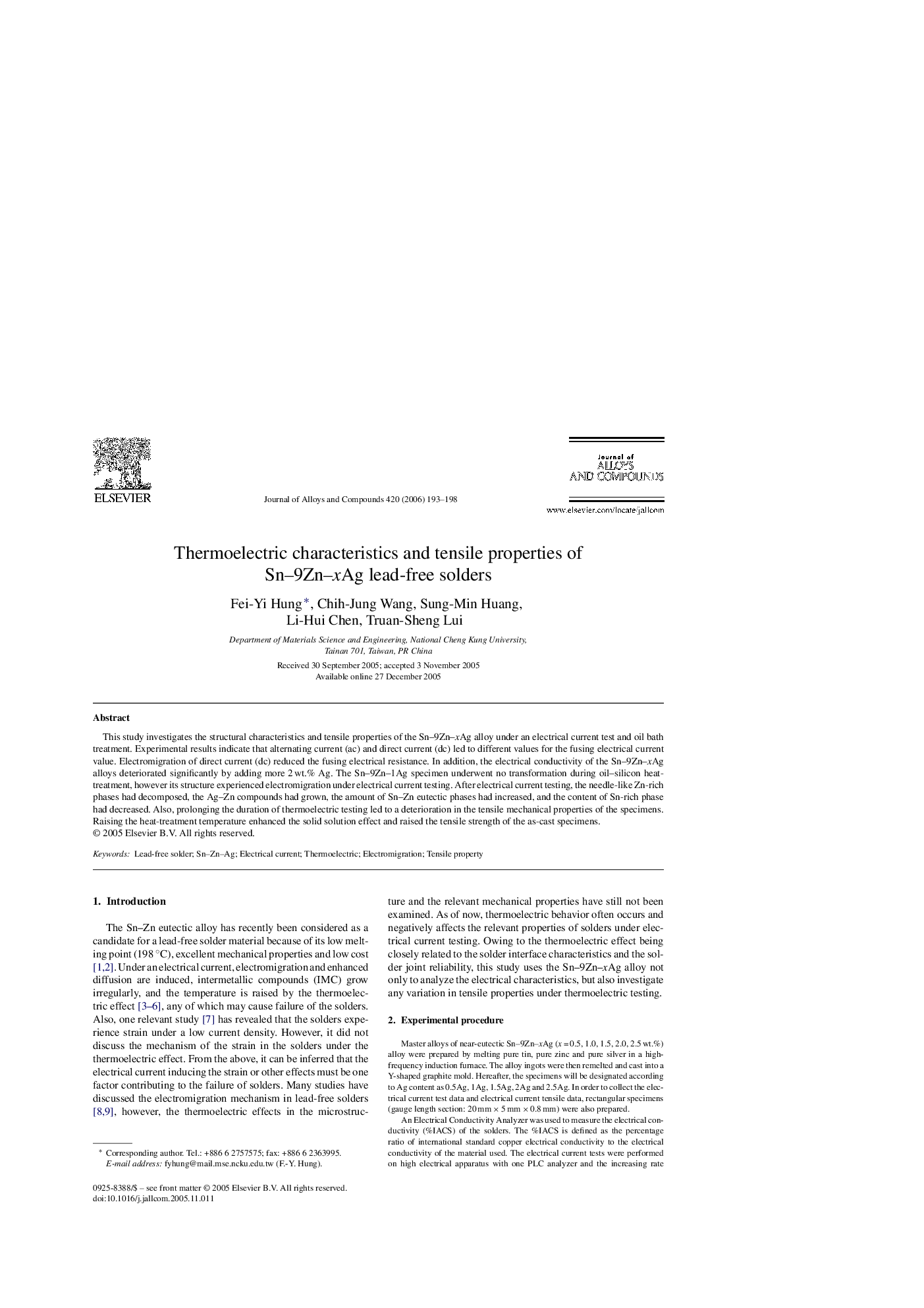| Article ID | Journal | Published Year | Pages | File Type |
|---|---|---|---|---|
| 1627241 | Journal of Alloys and Compounds | 2006 | 6 Pages |
This study investigates the structural characteristics and tensile properties of the Sn–9Zn–xAg alloy under an electrical current test and oil bath treatment. Experimental results indicate that alternating current (ac) and direct current (dc) led to different values for the fusing electrical current value. Electromigration of direct current (dc) reduced the fusing electrical resistance. In addition, the electrical conductivity of the Sn–9Zn–xAg alloys deteriorated significantly by adding more 2 wt.% Ag. The Sn–9Zn–1Ag specimen underwent no transformation during oil–silicon heat-treatment, however its structure experienced electromigration under electrical current testing. After electrical current testing, the needle-like Zn-rich phases had decomposed, the Ag–Zn compounds had grown, the amount of Sn–Zn eutectic phases had increased, and the content of Sn-rich phase had decreased. Also, prolonging the duration of thermoelectric testing led to a deterioration in the tensile mechanical properties of the specimens. Raising the heat-treatment temperature enhanced the solid solution effect and raised the tensile strength of the as-cast specimens.
